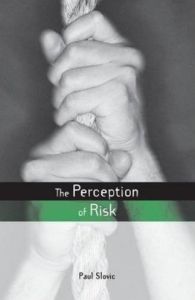Join getAbstract to access the summary!

Join getAbstract to access the summary!
Paul Slovic
The Perception of Risk
Earthscan, 2000
What's inside?
If you think something is really risky, the riskiest part may be your own thinking. Here’s how and why we perceive risk.
Recommendation
This dense collection of chronologically-ordered essays provides an excellent overview of research into how people think about risk. The traditional assumption governing public policy decisions has been that people are basically rational and assess risk based on logic and facts. But people do not always make rational assessments of risk or decide with cool detachment upon the best risk-adjusted courses of action. Most people lack a sophisticated understanding of probability. Even many scientists who understand statistics fail to act according to their knowledge. This book contains some fascinating material even though the presentation is lengthy, technical, academic and dry. The authors of these collected essays (Paul Slovic is a co-author on each essay) do not pretend to write for a general audience. They are clearly addressing specialists with a professional interest in the details of experiment design, controls and such. Nonetheless, getAbstract believes that the patient, persevering layperson will find that a worthwhile harvest rewards the effort of plowing through this tome.
Summary
About the Author
Paul Slovic is president of Decision Research and professor of psychology at the University of Oregon.






















Comment on this summary